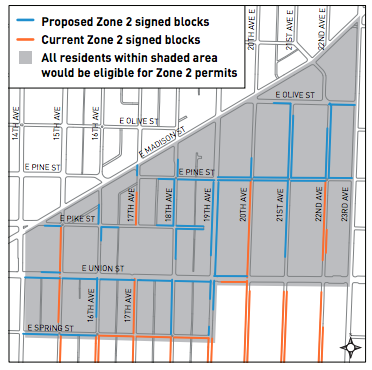Ballard has increasingly become a major nightlife area and employment destination in Northwest Seattle. And with that, demand for access to the area has resulted in serious pain points for local residents. On-street parking has become a pretty hot button issue throughout the neighborhood as shortages have risen block by block with demand.
In 2014, the Seattle Department of Transportation (SDOT) inventoried on-parking throughout the core neighborhood business district and found that utilization on any given block face ranged from 109% to 58%. SDOT made sweeping changes in response to this last year by introducing expanded paid parking areas. But now SDOT is considering further changes in the form of a new Restricted Parking Zone (RPZ) beyond the core neighborhood business district.
The RPZ is a program to help mitigate high parking demand by giving local residents on-street parking priority. Residents can register their vehicles (up to four per household plus one guest permit) and purchase permits to park 24 hours per day in zones that ordinarily would be time restricted, and each pass is valid for two years and typically costs around $65 (low-income households can purchase passes at reduced rates). Currently, there are 31 different RPZs across Seattle, but three more areas could be added within the next year. For an area to qualify for the RPZ program, a few pieces of criteria must be met:
- At least 75% of on-street parking spaces must be occupied;
- Of those occupied parking spaces, at least 35% must be used by non-resident vehicles;
- The area proposed for an RPZ must be at least 10 contiguous blocks (or 20 block faces); and
- There must be a clearly identifiable generator for parking demand (e.g., a university or medical center).
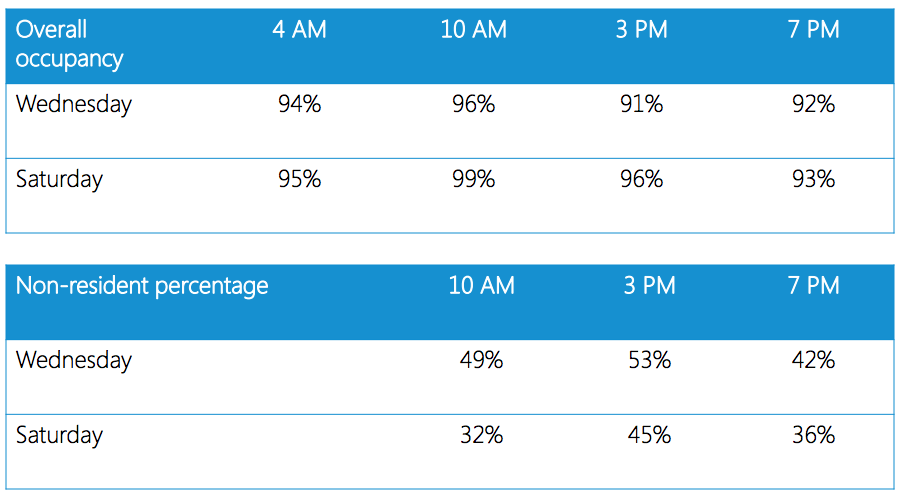
Residents in Ballard (Central Ballard Residents Association) came together in late 2014 to submit an RPZ request that would cover dozens of blocks in central Ballard. SDOT followed up on the request and conducted a parking study in September 2015. The study revealed two key statistics:
- An average of 93% of all on-street parking was being utilized during the day; and
- More than 35% of all vehicles parked on the street were not owned by local residents.
This means that the first three pieces of criteria for RPZ were met by the study. But the neighborhood also has obvious parking demand generators like local business and the Swedish Medical Center campus near Market Street and Tallman Avenue.
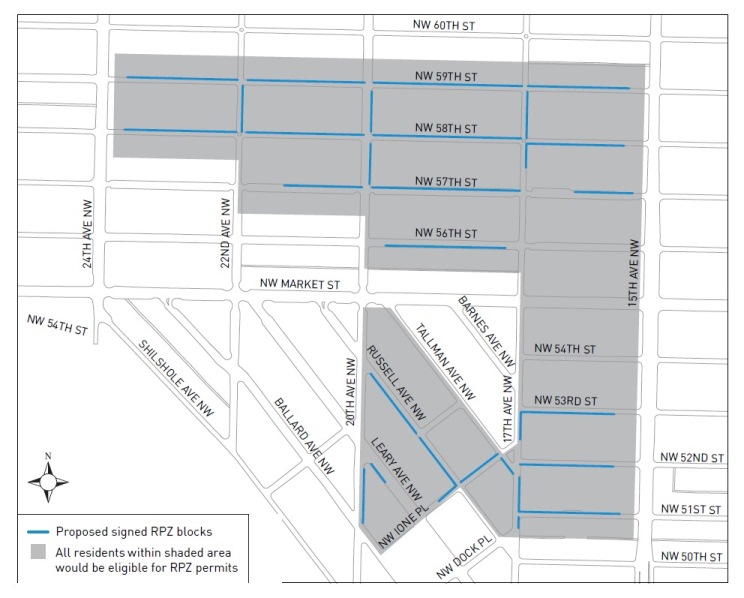
SDOT’s proposal is to sign approximately 30 block faces as RPZ in the north and east frame of central Ballard. Residents would be eligible if they live on block face designed as RPZ or fall within the larger RPZ area (see map above). If approved, the RPZ for this would area would be in effect during weekdays from 7am to 8pm. Those without an RPZ permit would be subject to a maximum time limit of two hours on any given block face. As a matter of policy, SDOT does not mark on-street parking areas in front of ground floor retail or non-residential uses as RPZ. And any existing parking restrictions, whether time limited or paid, would not be changed either.
More RPZs Coming
It’s not just Ballard that could get an RPZ this year. The University District, Capitol Hill, and Greenlake each could see either RPZ expansions or the creation of a new one.
Zone 10 in the University District will be expanded in the northeast of the neighborhood later this spring. At least 17 block faces will be added to the zone, typically on one side of a street. Many blocks in the area are still eligible to be designated RPZ, but those streets won’t be designated in this expansion. All residents in the affected area are eligible to participate in the program. Two-hour time limits will be effective from Monday through Saturday from 7am to 6pm, except by permit.
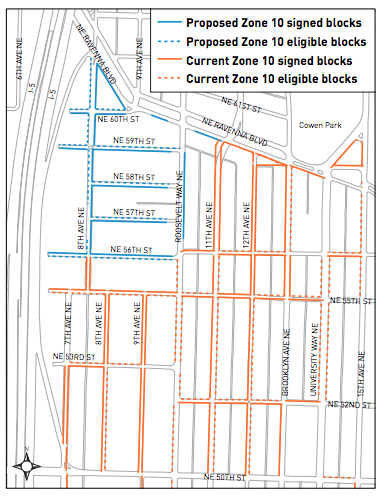
Zone 2 in Capitol Hill could be expanded north of E Spring St and E Union Street. More than 40 different block faces could join the Zone 2 RPZ, which has an existent patchwork of signed RPZ block faces north of Union and Spring. This expansion proposal would essentially fill in many of the gaps and add in some new blocks as well. Two-hour time limits will be effective from Monday through Saturday from 7am to 6pm, except by permit. But uniquely, residents south of Union could get free permits, which are jointly subsidized by Swedish Medical Center Cherry Hill and Seattle University.
Greenlake is slated to get a new RPZ as well. More than 40 block faces could be signed near the neighborhood core, just beyond where paid parking was recently implemented in fall 2015. The RPZ could extend from about NE 76th St to NE 65th St and I-5 to 1st Ave N. SDOT is proposing the RPZ to be in effect Monday through Friday 7am to 6am. A final decision on the proposal will be made sometime this summer and could go in effect late in the year.
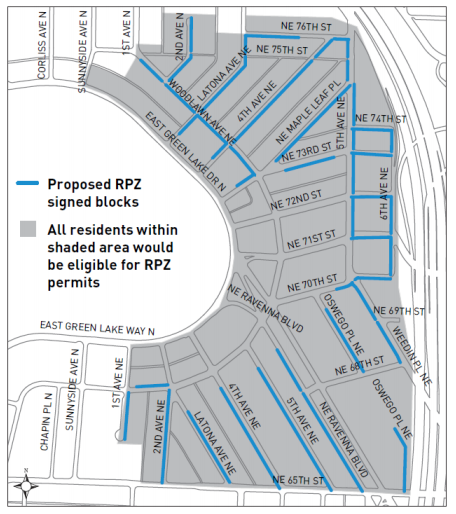
SDOT is taking feedback on the Ballard proposal through May 30th and offering an online survey.
Stephen is a professional urban planner in Puget Sound with a passion for sustainable, livable, and diverse cities. He is especially interested in how policies, regulations, and programs can promote positive outcomes for communities. With stints in great cities like Bellingham and Cork, Stephen currently lives in Seattle. He primarily covers land use and transportation issues and has been with The Urbanist since 2014.



